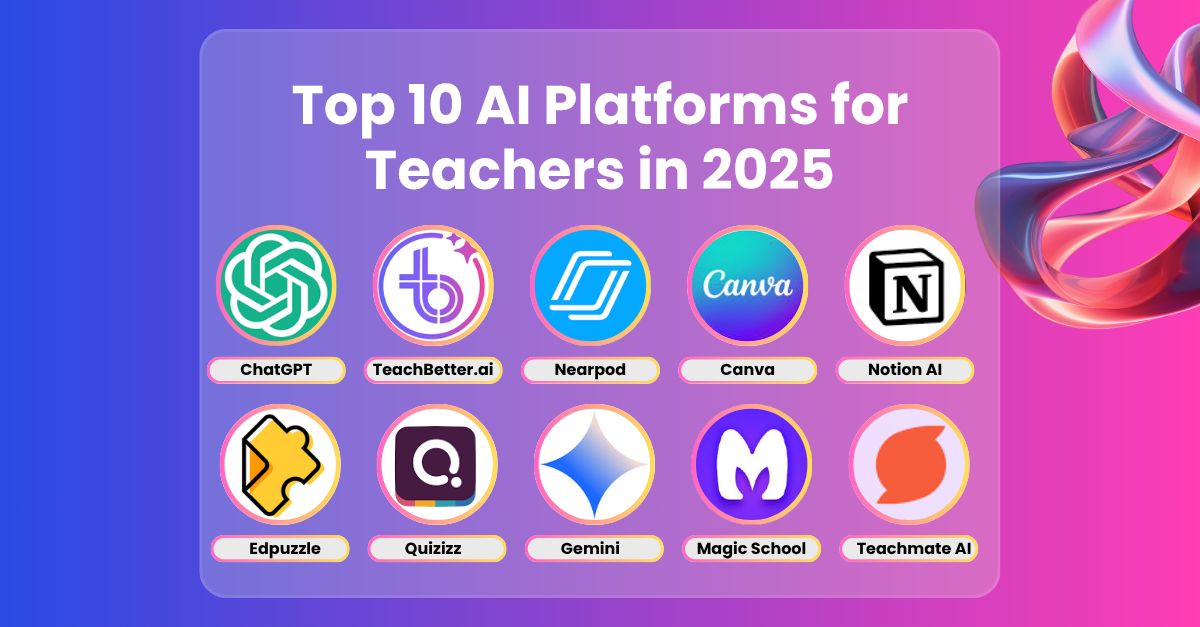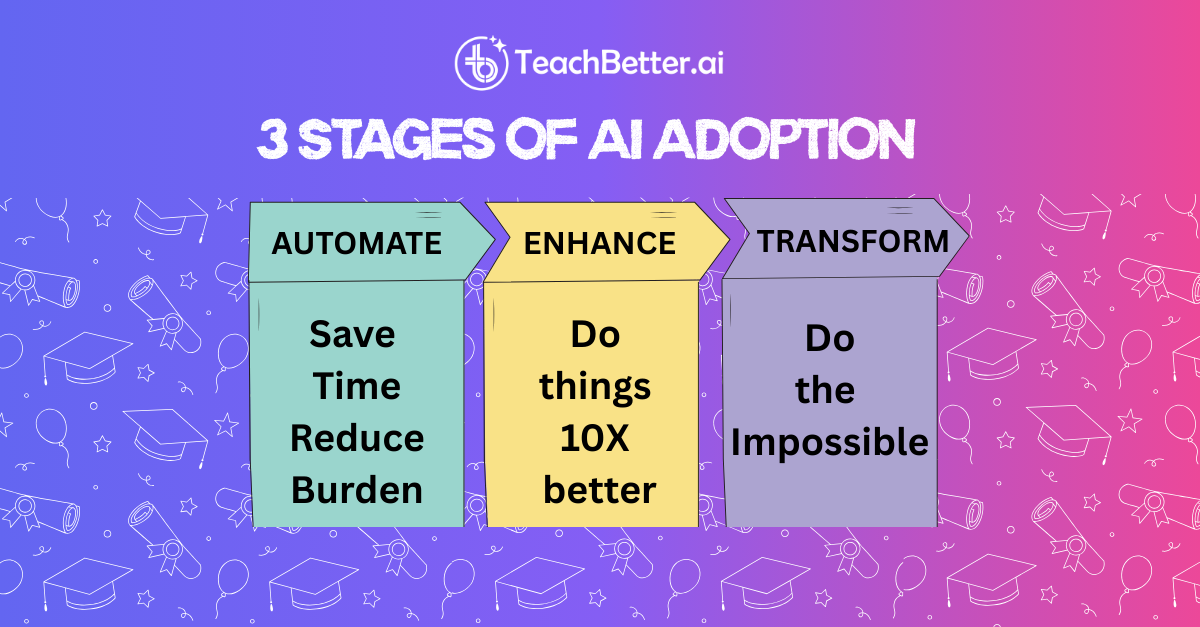The Knowledge Hub
Can TeachBetter.ai Replace ChatGPT for Students?
TeachBetter.ai
|
13 October, 2025

When a child opens YouTube to look up photosynthesis, they rarely stay on task. Very quickly, they might end up watching a cricket highlight. Or a Minecraft video. Or something completely irrelevant.
The internet is full of distractions. It offers infinite knowledge, but it was never designed for learning. That gap is exactly where TeachBetter.ai steps in.
The platform was founded by Binit Agarwalla, an alumnus of NIT Rourkela and XIM Bhubaneswar, who has 15 years of work experience, and Vipin Kumar, an IIM Kozhikode MBA with a decade of experience. The company calls itself a safe, education-first alternative to Google, YouTube, and ChatGPT.
Think of it as a bundle of the internet’s most powerful tools – search, video, and AI tutors. It has been reimagined exclusively for students, teachers, and parents. It creates a distraction-free environment built specifically for learning.
AI in education shouldn’t be a luxury for a few, but a mass movement that reaches everyone.
The problem that we all know of
India’s education system operates on a one-size-fits-all model. Teachers singly explain concepts, but students have vastly different learning styles and speeds. When they struggle, where do they turn? The same platforms that adults use: Google, YouTube, and ChatGPT.
These platforms weren’t designed for education. They’re built to maximise engagement and ad revenue, not learning outcomes. The result? Students get help, but at the cost of focus, safety, and educational quality.
The sad reality is that the Indian education system has not evolved with the changing global landscape,” Binit explains. “With new technology at our disposal, we can completely revamp how education is delivered, prioritising application of concepts over memorisation and retention".
TeachBetter.ai’s three-pronged strategy
The value lies in their simplicity. The platform is built around three types of users:
- Independent teachers who subscribe directly.
- Students and parents looking for a safe, distraction-free study space.
- Schools purchasing bulk licenses for their ecosystem.
The platform serves three main audiences with one solution. Its strength comes from specialised tools. One example is the Concept Mastery Coach. Students can enter any topic they learned in class. The tool then asks questions across five levels of Bloom’s Taxonomy. Each answer comes with detailed explanations, ensuring genuine understanding rather than rote memorisation.
Here’s how some of the AI tools work in practice:
Tools for teachers
| Tool | What it does | Why it matters |
| Lesson planner | Generates curriculum-aligned lesson plans in minutes with real-life examples, activities, and analogies | Saves hours of prep time, makes classes more engaging |
| Quiz & worksheet generator | Creates ready-to-use quizzes, worksheets, and assessments tailored to difficulty levels | Simplifies evaluation and ensures continuous learning |
| Creative resource generator | Produces poems, riddles, activities, and classroom exercises on any topic | Boosts creativity and student engagement instantly |
| YouTube video analyser | Converts any YouTube link into transcripts, summaries, and quizzes | Saves teachers’ time, keeps video learning distraction-free |
| Presentation generator | Builds slide decks with side-by-side text and images, exportable to PPT/Google Slides | Helps teachers explain concepts visually and professionally |
Tools for students
| Tool | What it does | Why it matters |
| Concept explainer | Simplifies topics and explains concepts in diverse ways | Matches diverse learning styles, makes hard topics easy |
| Doubt solver | Answers student questions instantly with clear step-by-step solutions | Provides 24/7 academic support, reduces dependency |
| Concept mastery coach | 5-level Bloom’s Taxonomy-based learning with feedback & badges | Builds confidence and deep mastery over concepts |
| Web search assistant | Curated, ad-free, clutter-free internet search for text, images & videos | Keeps students focused, shields them from distractions |
| Ask me anything | Open exploration tool for any academic or curiosity-driven query | Encourages inquiry, curiosity, and self-driven learning |
Another standout feature is the Concept Explainer, which adapts to different learning styles. Students can ask for explanations through stories, practice questions, or visual content. All of it is filtered for educational quality, with no ads or distractions.
Why would this approach work?
Traditional platforms use recommendation algorithms designed to keep users scrolling. TeachBetter.ai deliberately avoids this. “There is absolutely nothing we recommend from our side, and we will not throw any ads or distractions at students,” Binit emphasises.
“If you are learning the Pythagoras theorem, you will stay focused on that concept.”
This focus extends to content curation. Every video and resource is filtered for educational relevance and quality. No clickbait thumbnails, no algorithmic tangents, no sponsored content masquerading as education.
The pricing strategy reflects their mission-driven approach: ₹149 per license per month.
We built this platform to drive the mass adoption of AI in education. We don’t want to build an expensive platform that only early adopters can use, as that would create a huge digital divide.
The non-tech founder advantage
Binit comes from a business background, not a technical one. At first, this might look like a disadvantage in a tech-heavy space. But for him, it has become a secret weapon. He has worked in corporate strategy, Marketing, B2B SaaS, and across both small startups and large organisations. This gives him a deep understanding of the business side of education.
I can do anything and everything to run a company except coding. This includes product management, sales, marketing, and operations.
Their approach to building the platform was equally strategic. Rather than spending a year on an MVP, they partnered with experienced developers to create a consumer-grade solution from day one. “The day the partner started to build the product, we started to build our marketing and business plans,” Binit explains.
Early validation and growth
Launched in April this year at the Start-up Mahakumbh, TeachBetter.ai has already got 13,000+ Signups on the platform, and the feedback from serious early users has been encouraging.
The platform has also secured a partnership with a leading university to integrate gamified simulations. They are also exploring AI voice APIs for speech assessment and concept teaching. This will help them move beyond text-based learning into multimodal education.
TeachBetter.ai is currently seeking ₹5–7 crore in seed funding. The money will be used in two key areas. First, they want to enhance the platform with many more advanced solutions and also bring in a like-minded CTO to build a small tech team.. Second, they plan to invest in user acquisition and retention to reach critical mass. At that stage, network effects can accelerate growth.
The Reliance Jio-inspired vision
Binit’s long-term vision draws inspiration from an unlikely source: Reliance’s telecom revolution.
“I’ve worked in the telecom industry and saw how they created a mass movement by democratising mobile internet access. We want to create a fraction of that impact with AI in education.”
This isn’t about incremental improvement; it’s about fundamental transformation.
In our times, a student’s ability to retain concepts was important. But now, with a simple Google search, you can get the best possible answer instantly. The new differentiating factor is your ability to apply concepts in real life.
The platform’s roadmap includes any AI tool with educational potential. As new technologies emerge, TeachBetter.ai plans to add them to the platform. They want to keep the ecosystem updated and useful. At the same time, they are committed to staying affordable while continuing to innovate.
Beyond the hype
Unlike previous technology waves driven by corporate adoption, AI’s growth is consumer-led. “The use of AI is significantly higher by individuals like you and me than it is by companies,” Binit notes. “People are saying, ‘If AI can make my life easy, I will pay for it and use it to save 50% of my time so I can do better things in life.'”
This grassroots adoption creates unique opportunities for platforms like this. Instead of fighting against how students already use AI, TeachBetter.ai works with that behaviour. The platform channels it toward more productive learning outcomes.
The real test is whether they can scale their vision and still keep the experience distraction-free. That focus is what makes them different. If they succeed, TeachBetter.ai won’t be just another edtech platform. It could become the foundation for how an entire generation learns to learn.
AI adoption isn’t being pushed by companies. It’s being pulled by individuals. People use it because it saves them time, helps them learn better, and makes life easier. We just need to channel that energy in the right direction.
Source: This article is originally published on AngelStack


